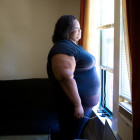
Growing Up to Be Stickup Kids
|
NEW YORK --By the early 1990s, the crack era that devoured New York City in the 1980s was on the decline and crime rates were similarly falling. But Randol Contreras saw something different on the streets in the South Bronx neighborhood where he grew up. His drug dealer friends, no longer making the same money selling crack, were turning to robbing drug dealers for an increasingly dwindling share of the market. One vice traded for another, more violent one. His book "Stickup Kids: Race, Drugs, Violence and the American Dream," published by the University of California Press last month, chronicles the downfall of the drug trade and the young Dominican men from his childhood neighborhood that tried to make an often dangerous living in it.

